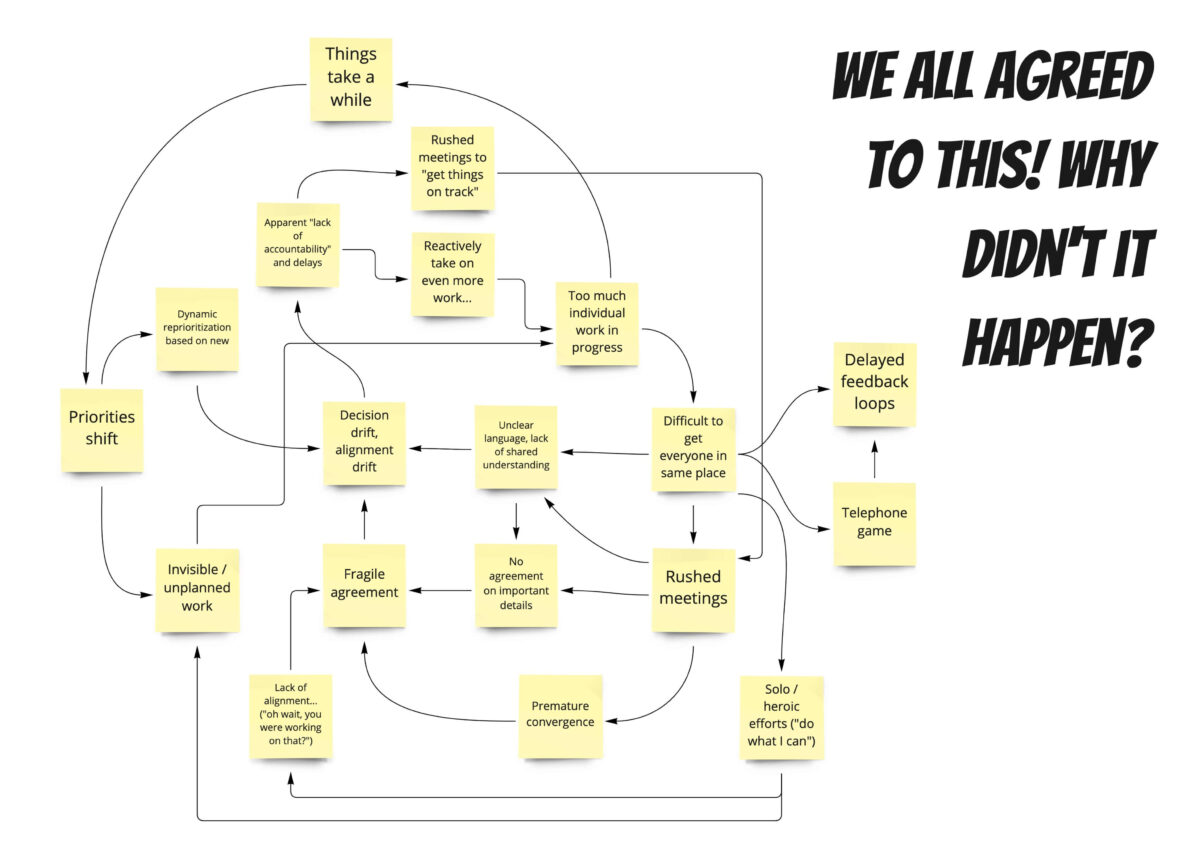John Cutler explains the dynamics and the underlying forces that create decision drift!
“Why didn’t it happen?”
My Takeaways on Why didn’t it happen
John doubles down on his rally cry for limiting work-in-progress, and I couldn’t agree more! When I wrote about prioritisation, I mentioned that we grumble that there just aren’t enough hours in the day and that someone else seems to have a lot of free time. But we regular mortals only have twenty-four hours in a day. The problem is that we don’t protect our hours from being stolen. We allow thieves to steal time from us, day after day. Who are these thieves of time? The five thieves of time that prevent you from getting work done include (DeGrandis, D., Making work visible: Exposing time theft to optimize workflow, 2017):
- Too Much Work-in-Progress (WIP): work that has started, but is not yet finished. Sometimes referred as partially completed work.
- Unknown Dependencies: Something you weren’t aware of that need to happen before you can finish.
- Unplanned Work: Interruptions that prevent you from finishing something or from stopping at a better breaking point.
- Conflicting Priorities: Projects and tasks that compete with each other for people and resources block flow and increase partially completed work.
- Neglected Work: Partially completed work that sits idle on the bench.

That said, John takes a step back and talks about somethings even more fundamental, like decision fragility and decision drift: we think we’ve agreed, but we haven’t!
He has done a much better job then I will be able to do to explain all the underlying forces that create decision drift, including too much work-in-progress, lack of alignment, priorities shifting. But the one that really struck a chord with me was rushed meetings!
When all we can get from team members is 30 minutes of their time, there is not enough time to listen to create shared understanding what is going on!
Understanding the perspectives of the people you interact with will help you adjust what you say and how you collaborate. The goal is not to persuade others to adopt your intentions. The goal is to let empathy affect your own approach.
Young, I. Practical Empathy (2019)
The all the remote work we do these days, the first impression that everyone had is that now everyone is more available! But some of the decision making that used to take longer, face-to-face workshops are being squeezed in between meetings, and there isn’t enough time to listen!
About John Cutler
John Cutler is the product evangelist at San Francisco product analytics software developer Amplitude. In his twitter handle, he describes himself as someone who loves wrangling complex problems and answering the why with qual/quant data.
Recommended Reading
Young, I. (2019). Practical Empathy. Brooklyn, New York: Rosenfeld Media.

